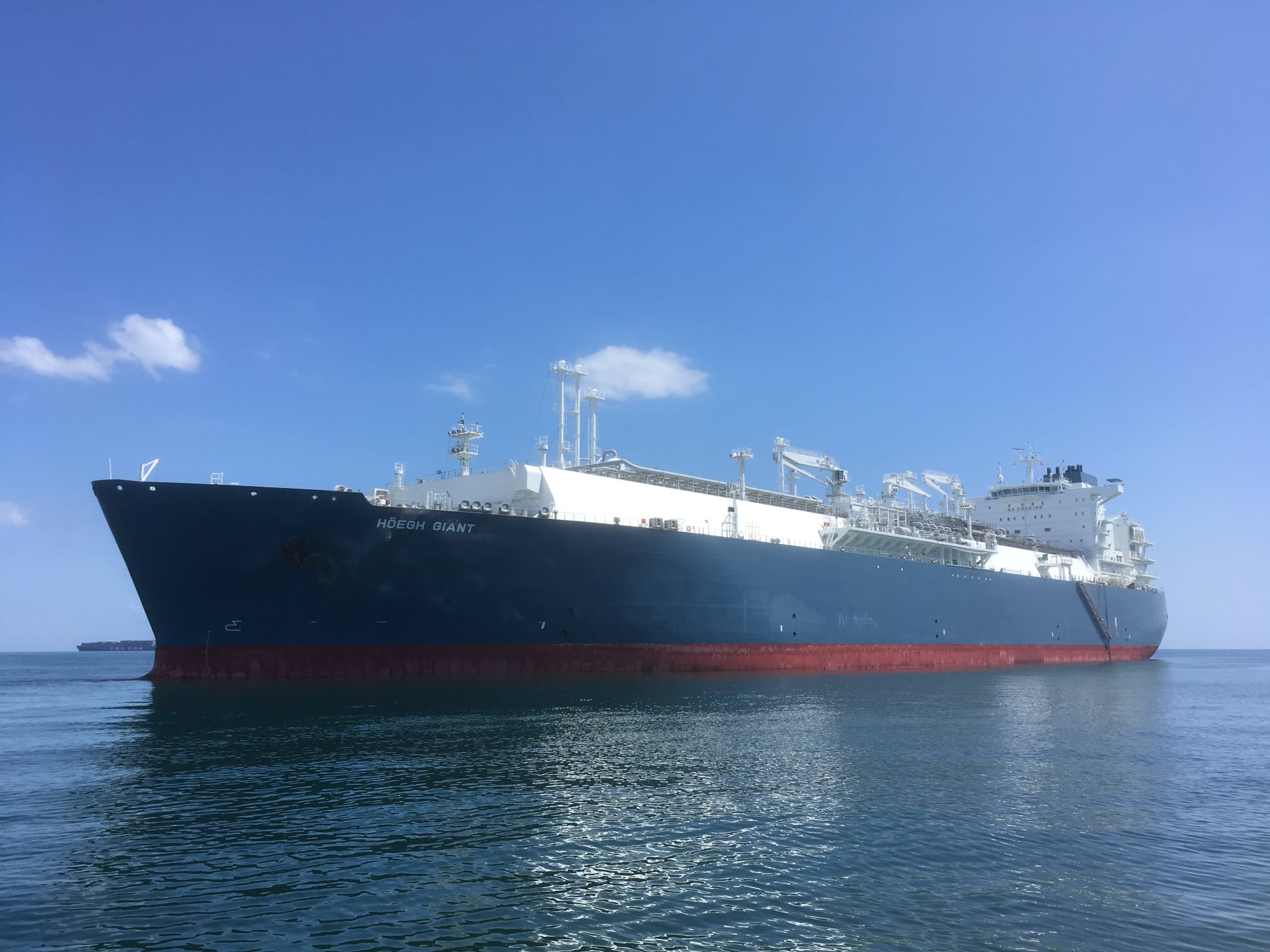Hoegh LNG is planning to send its 170,000-cbm FSRU Hoegh Giant in the second quarter of this year to Brazil to start the previously signed contract with a unit of Brazilian energy company Cosan.
Back in December 2021, Hoegh concluded the 10-year FSRU charter with Terminal de Regaseificacao de GNL de Sao Paulo (TRSP), a unit of Cosan’s Compass Gas & Energia, to serve the latter’s project in the Port of Santos with a regasification capacity of 14 million cbm/day.
Hoegh initially planned to allocate the 2018-built 170,000-cbm Hoegh Gannet for the job, but this FSRU is currently serving a ten-year charter deal at Germany’s Elbehafen LNG terminal in Brunsbuettel.
Instead of this unit, Hoegh Giant is scheduled to go to Brazil in the second quarter of 2023 and start operations under Hoegh’s time charter contract with TSRP/Compass, the FSRU operator said in its quarterly and full-year result report.
Hoegh Giant left the Damen yard in Brest in November, and is now operating in the LNG carrier market on an interim charter, according to Hoegh.
This FSRU was originally intended to serve H-Energy’s delayed import facility in Jaigarh, India.
However, Hoegh LNG terminated the charter deal in April last year with H-Energy following “the charterer’s default of the contractual terms” and the FSRU left India after that.
Higher expenses
Hoegh has ten FSRUs and two LNG carriers and its entire fleet is either operating under or committed to long-term contracts.
In addition, it recently agreed to purchase the 2013-built LNG carrier Golar Seal from CoolCo for about 184.3 million. The firm is also looking to convert this carrier to an FSRU.
Hoegh has been quite busy last year and it signed two ten-year charters with the German government, including for the Brunsbuettel terminal, which is currently undergoing commissioning, and the operational Wilhelmshaven facility.
The 145,000-cbm Neptune, which is employed on a long-term charter with TotalEnergies, started regas operations for Deutche ReGas in Lubmin, Germany, as well.
For the full year ended 31 December 2022, Hoegh reported a total income of $380.8 million and an Ebitda of $153.2 million, which compares with $351.8 million and $217.2 million for the previous year.
“Although revenues increased, the group also incurred higher expenses in 2022, through increased vessel operating expense primarily related to repositioning of three vessels to make them ready for FSRU operations and increased administrative expenses,” Hoegh said.
Hoegh reported a net loss of $55.4 million for 2022, which compares with a net loss of $21.3 million for 2021.
The firm expects that the Ebitda for the first quarter of 2023 will improve compared to the fourth quarter of 2022 with the start of the new contracts.
Australian contract, new FSRU projects
Hoegh said its near-term focus is to ensure its new FSRU projects start operations as planned by the company’s customers in Germany and Brazil over the coming months.
“Furthermore, we are planning for commencement of the contract with AIE in Australia with expected start towards the end of this year,” the firm said.
Last year, Hoegh and Australian Industrial Energy (AIE), a unit of Squadron Energy, confirmed a long-term FSRU charter deal for the latter’s Port Kembla import terminal in New South Wales.
The FSRU contract has a term of 15 years with early termination options for AIE after year 5 and 10.
AIE picked the 170,000-cbm Hoegh Galleon to serve the facility at Port Kembla.
Looking forward, Hoegh said that the demand for FSRUs is expected to “remain strong.”
“While Hoegh LNG has secured long-term contracts for its entire fleet of FSRUs, our business development team is in active dialogue with several potential new projects looking for FSRU capacity,” it said.

